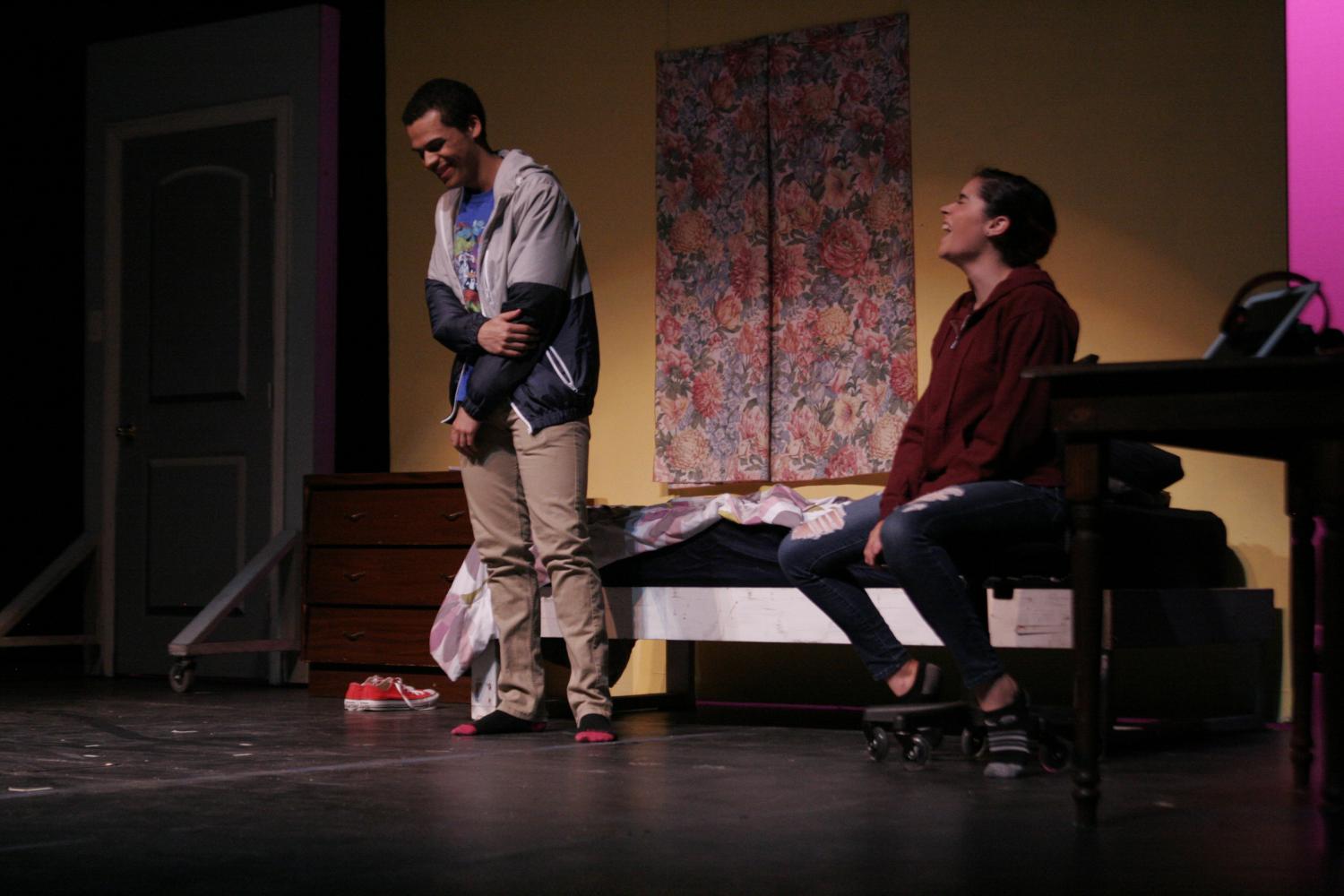‘178 Blank Pages’ fills theater with tears on and offstage
May 31, 2017
The soundtrack to senior Bryce Stephens’s play, “178 Blank Pages,” was a chorus of “awwws” from the 244 audience members in Carrington May 19. Whether it was a scene featuring the play’s subtle hilarity or its tear-wrenching conflicts, actors junior Nic Sanon and sophomore Lex Navarra breathed authenticity into their characters Bryan and Kady.
The play opened with Kady noticing Bryan’s tics (he has Tourette’s Syndrome.) Tics are movements or vocalizations that people with Tourette’s Syndrome make when nervous or excited.
Kady noticed these tics (as she said, it’s hard not to) and the two became fast friends.
The journey from thought to theater started with director Stephens. He began writing the play last year during Sequoia’s production of “All in the Timing.” It took a year for the play to develop from a jotted-down scene of a girl meeting a boy to the full production that raised $1,555 for the Drama Club—which began the 2016-2017 school year with no funding.
“178′ started out as just a passion project,” Stephens said. “Then the Drama Club got involved, and then [music teacher Daniel] Broome and [Administrative Vice Principal Gary]Gooch got involved, and I found out we could use Carrington and it just started to come together.”
Though the play was student-written and student-directed, there was nothing—from the music composed by Stephens that played between scenes to the realistic costumes and to the brilliant acting—that didn’t seem entirely professional.
It is impossible to overestimate Stephens’s role; nevertheless, the success of the production cannot be entirely credited to him.
“At first I tried to do the whole thing myself,” Stephens said. “[178] was my baby—I wanted to do everything: the costumes, the lighting, the sets … Eventually I figured out that I just couldn’t, and I got a great team together to help me.”
Stephens, like Bryan, has Tourette’s; he used this as an inspiration. “I wrote [the play] because I noticed a lack of accurate representation of Tourette’s Syndrome in the media,” he said.
“One of my goals is to have the audience see past the Tourette’s. In the end, I used it as a tool. I want the audience to leave knowing that it’s okay to get attached and really care about someone.”
One of the challenges of putting on the production was teaching Sanon how to have the syndrome—Stephens had to teach him to tic—and Sanon was happy to have this instruction. He also found that having Stephens both write and direct the play was useful because it allowed Sanon to remain truer to the ideals that Stephens envisioned.
“[Stephens] and I would talk a lot about how he wanted a certain scene done,” Sanon said.
Though he helped with character development, Stephens allowed for actors Sanon and Navarra to create their own interpretation of their characters.
“This is the first time this show has ever been produced,” Navarra said. “[Stephens] really let [Sanon] and me develop our characters and make them our own in a way that I’ve never gotten to do before.”
When Stephens picked the actors that would play his two characters, he watched for the way they interacted with each other.
“[Sanon] and [Navarra] had this great chemistry between them when they were on stage,” Stephens said. “They really bounced off each other in the way I wanted Bryan and Kady to.”
It was this magnetic chemistry—evoked both by Stephens’ deceptively simple lines and by Sanon and Navarra’s elegant delivery—that kept the audience “awww”-ing during the show and talking about it days later.







